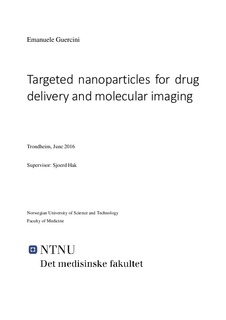Targeted nanoparticles for drug delivery and molecular imaging
Abstract
This study involved experiments on signal colocalization between αvβ3 integrin and RGD conjugated nanoemulsions as well as studies on nanoemulsion distribution and differences between the internalization patterns of RGD-NE and RAD-NE over time. This study was carried out on HUVEC cells and they were experimented upon from the fourth until the seventh passage. The study involved the research of a suitable optimization protocol, that is, a replicable optimal method for cell seeding, experimentation and fixation that yields the best results in terms of cell plating efficiency and cell density after exposure to experimental conditions. Cell plating efficiency ad well as density and morphology has been found to be optimal when cells were seeded in a concentration of 20.000 cells per µ-well in 300 µl of defined medium. Cells density and morphology was found to be satisfactory when cells were fixed for 5 minutes at room temperature with 300 µl of 3% paraformaldehyde solution in PBS. Prior to the colocalization study, it was hypothesized that we would find strong evidences between αvβ3 integrin and RGD-NE, alas, this was not the case. More precisely in the period of nanoemulsion incubation, almost no evidence of signal colocalization was found. It was concluded from the study that either the experimental method was faulty or that signal colocalization did indeed happen but it was not present in the time points analysed by this experiment. The last study on the internalization behaviour of nanoemulsion as well as its distribution over time, confirmed previous hypothesis on internalization patterns and internal nanoemulsion distribution.
